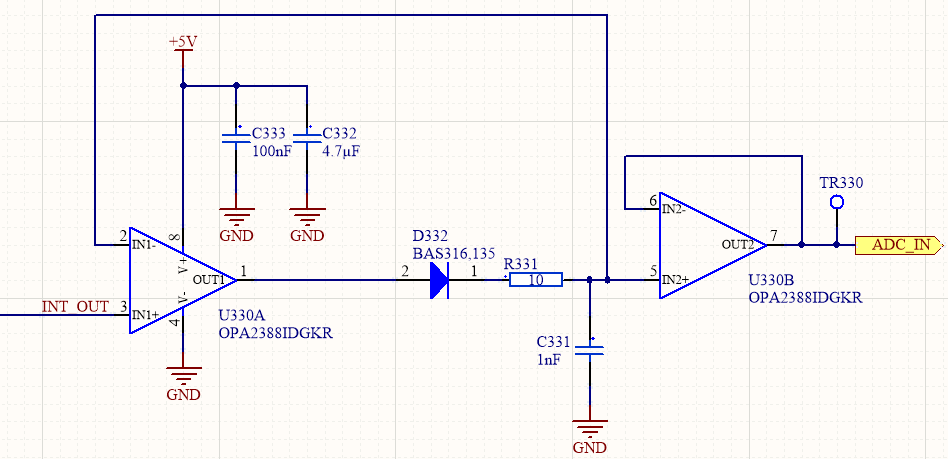Other Parts Discussed in Thread: OPA2192, OPA388
Hello,
I am struggling with a peak detector circuit based on the OPA2388, and it just does not want to work!
I have eventually reduced it to this:
What I get from it, when appropriately stimulated with a repeatable input signal is this:
I do not understand why the C331 capacitor is not holding the charge, and the only thing I can blame it on is on the input leakage current of the opamp input. The datasheet indicates am input bias current of less than 1nA, but it indicates this is with an Ri=100kOhm. I am not sure what this Ri is referring to, is it an additional series resistance that needs to be added to the input of the opapm? If I consider the leakage of both opamp inputs connected to the C331 (about 1nA each) and the maximum reverse current of the diode (30nA) I estimate the decay on the capacitor must not be greater than 35mV during the 1ms period (which is the repetition rate of the input signal).
I must mention that I am explicitly not probing the capacitor voltage directly with the oscilloscope, to prevent the probe impedance from discharging the cap. I am only able to look at the output of the second opamp (which is in buffer configuration.
So any ideas? Is it not the OPA2388 the right one for the job? I have replaced both the opamp IC and the diode, just in case I was dealing with a faulty one, but that was not it.
Best regads,
Cristian



